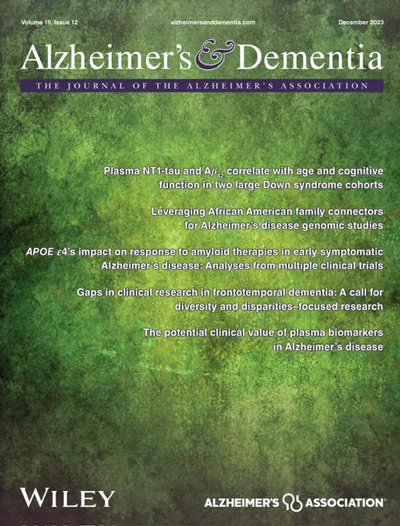Predicting amyloid beta accumulation in cognitively unimpaired older adults: Cognitive assessments provide no additional utility beyond demographic and genetic factors
Abstract
BACKGROUND
Integrating non-invasive measures to estimate abnormal amyloid beta accumulation (Aβ+) is key to developing a screening tool for preclinical Alzheimer's disease (AD). The predictive capability of standard neuropsychological tests in estimating Aβ+ has not been quantified.
METHODS
We constructed machine learning models using six cognitive measurements alongside demographic and genetic risk factors to predict Aβ status. Data were drawn from three cohorts: Anti-Amyloid Treatment in Asymptomatic Alzheimer's Disease (A4), Alzheimer's Disease Neuroimaging Initiative (ADNI), and Australian Imaging, Biomarker & Lifestyle (AIBL) study. Internal validation was conducted within A4 with external validations in ADNI and AIBL to assess model generalizability.
RESULTS
The highest area under the curve (AUC) for predicting Aβ+ was observed with demographic, genetic, and cognitive variables in A4 (median AUC = 0.745), but this was not significantly different from models without cognitive variables. External validation showed no improvement in ADNI and a slight decrease in AIBL.
DISCUSSION
Standard neuropsychological tests do not significantly enhance Aβ+ prediction in cognitively unimpaired adults beyond demographic and genetic information.
Highlights
- Standard neuropsychological tests do not significantly improve the prediction of amyloid beta positivity (Aβ+) in cognitively unimpaired older adults beyond demographic and genetic information alone.
- Across three well-characterized cohorts, machine learning models incorporating cognitive measures failed to significantly improve Aβ+ prediction, indicating the limited relationship between cognitive performance on these tests and the risk of pre-clinical Alzheimer's disease (AD).
- These findings challenge assumptions about cognitive symptoms preceding Aβ+ screening and emphasize the need for developing more sensitive cognitive tests for early AD detection.


 求助内容:
求助内容: 应助结果提醒方式:
应助结果提醒方式:


